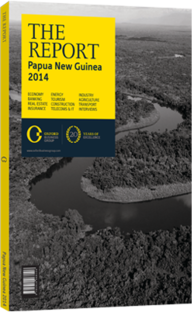This chapter includes the following articles.
Agriculture & Fisheries

As part of efforts to tackle the country’s over-reliance on mineral and energy exports, the government is supporting the growth of the agriculture sector to promote diversification. Forestry, agricultural and fishery activity currently accounts for one third of the economy and remains the principle livelihood of the vast majority of Papua New Guinea’s citizens. Agriculture exports dropped from $1.54bn in 2011 to $1.1bn in 2012, according to the central bank, with much of the decline due to falling commodity prices. Looking forward, commodity prices should rebound with demand gaining momentum after a stronger first quarter in 2014. Several agricultural subsectors such as forestry, palm oil and fisheries have developed highly profitable, yet more environmentally responsible, business models. Planned improvements in transportation infrastructure are due to pave the way for more efficiency and expansion into untapped areas. This chapter contains interviews with Greg Worthington-Eyre, CEO, Trukai Industries; and John Kasu, Managing Director, National Fisheries Authority, and a viewpoint from Tommy Tomscoll, Minister of Agriculture and Livestock.

